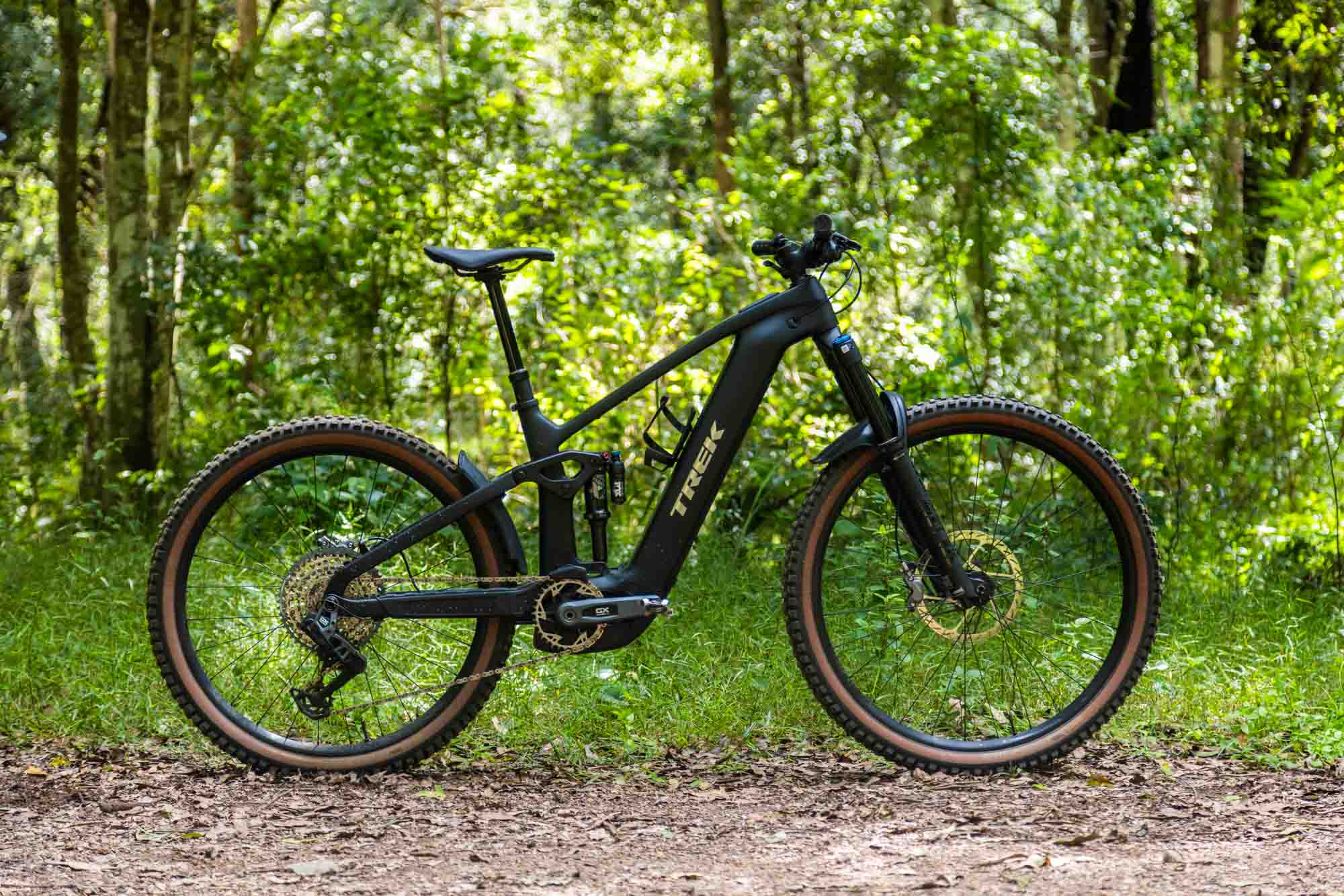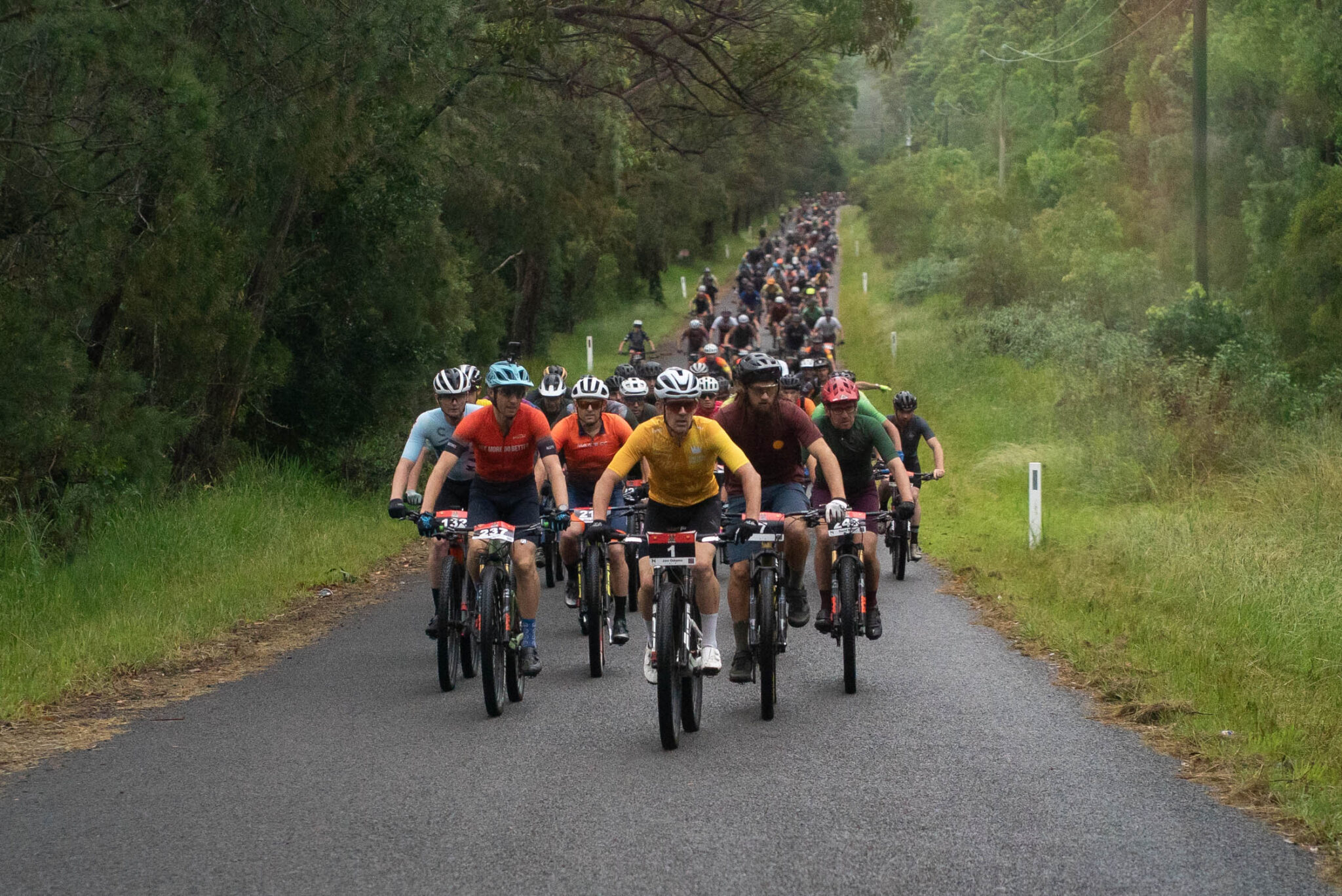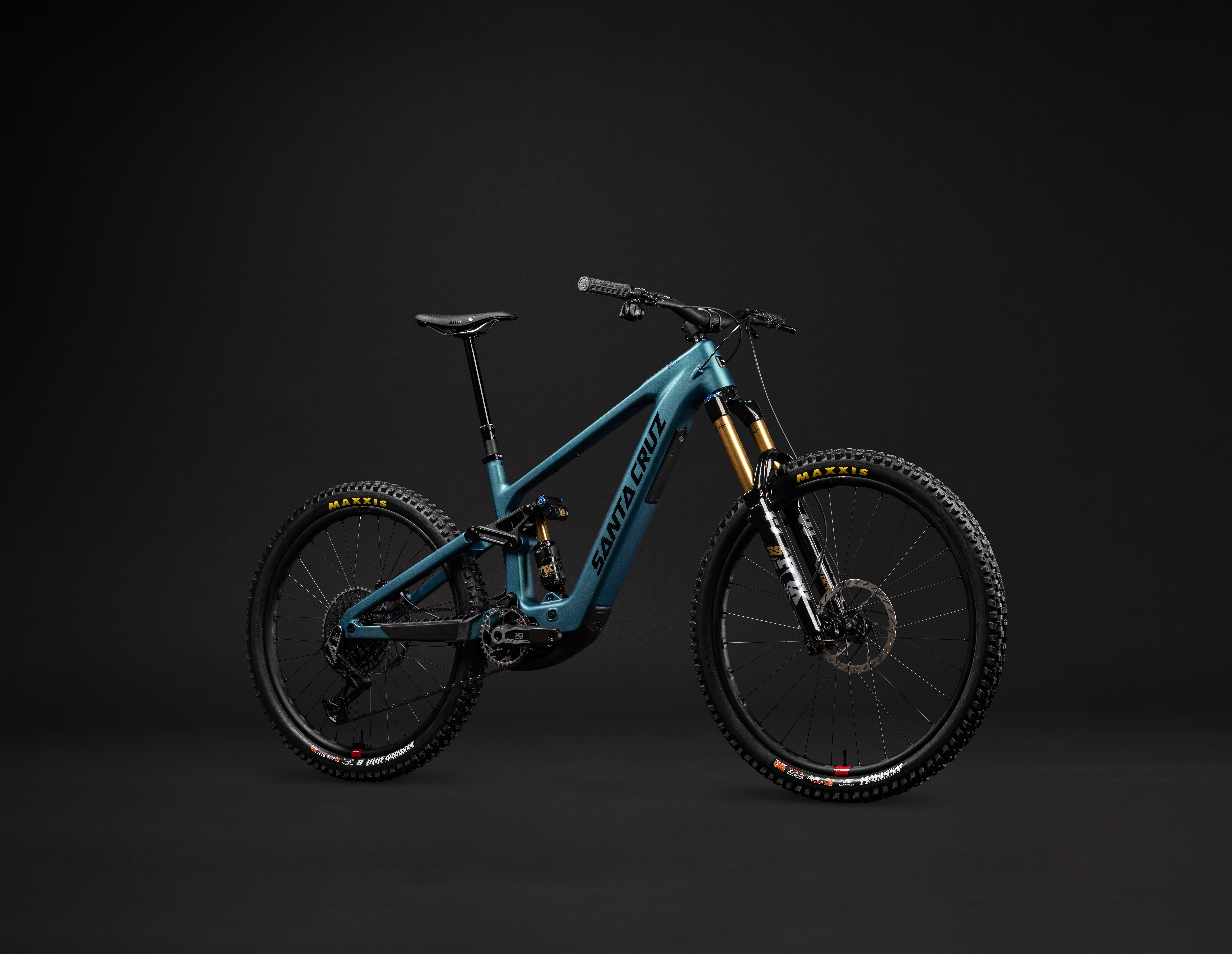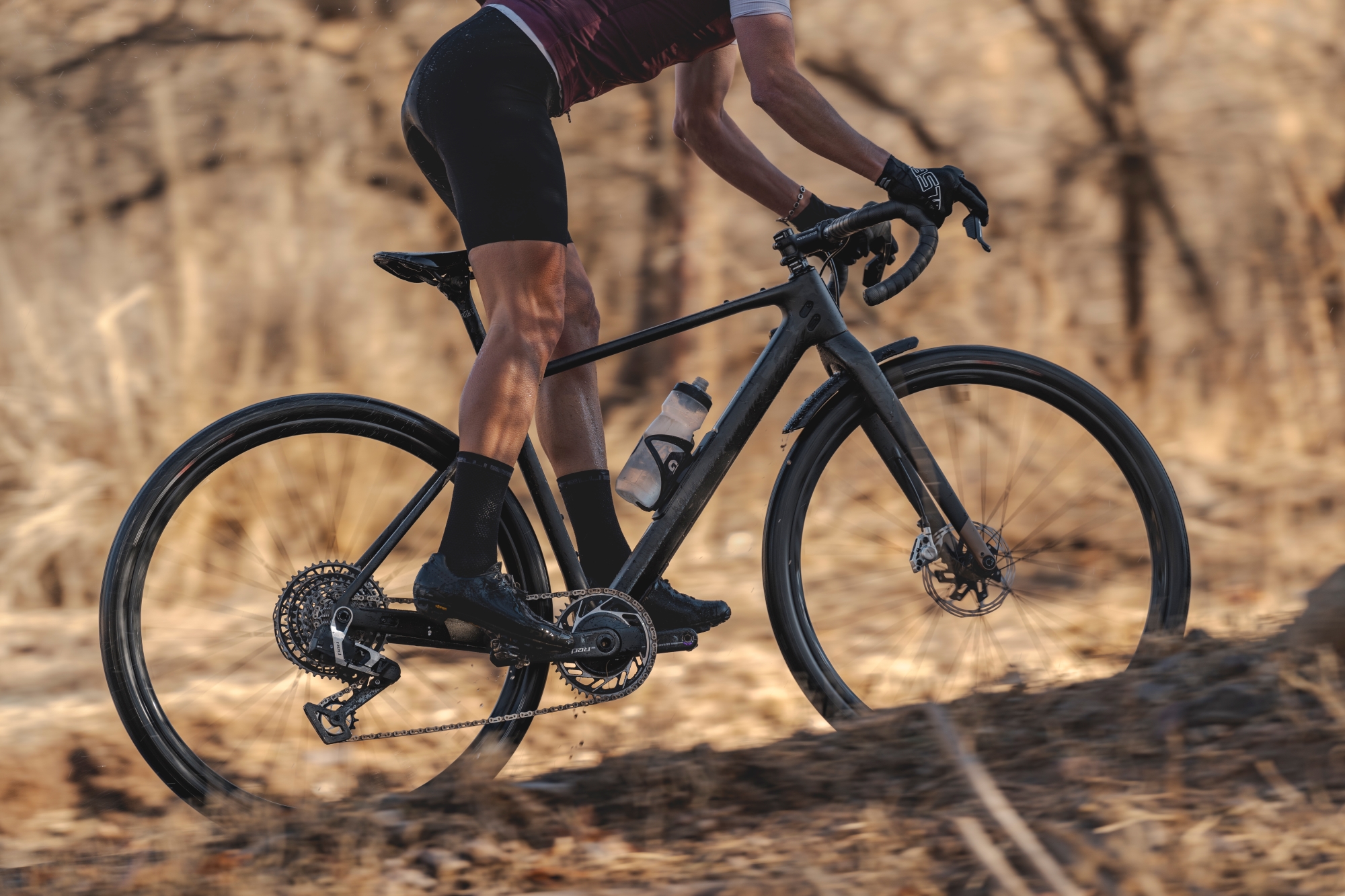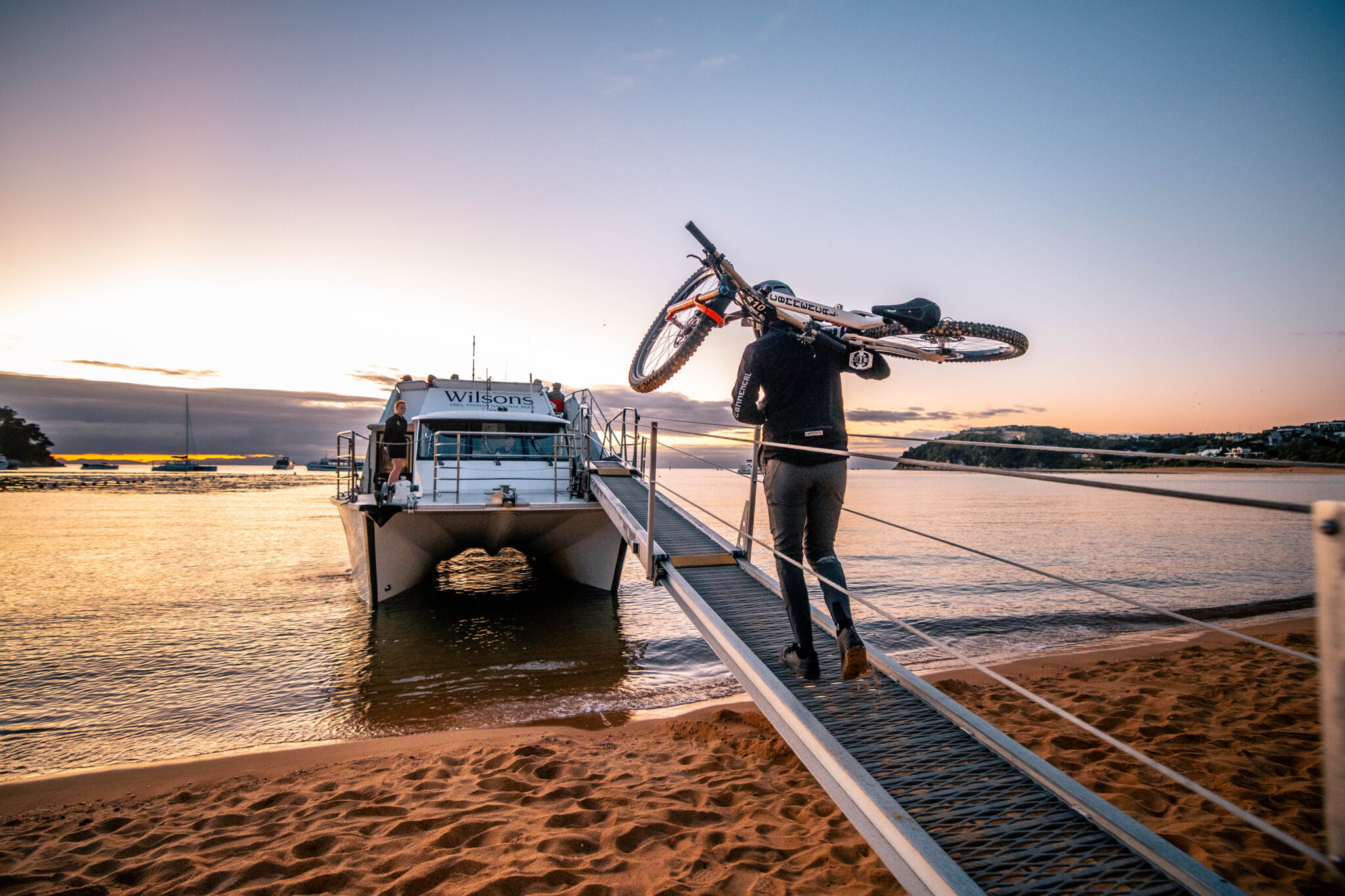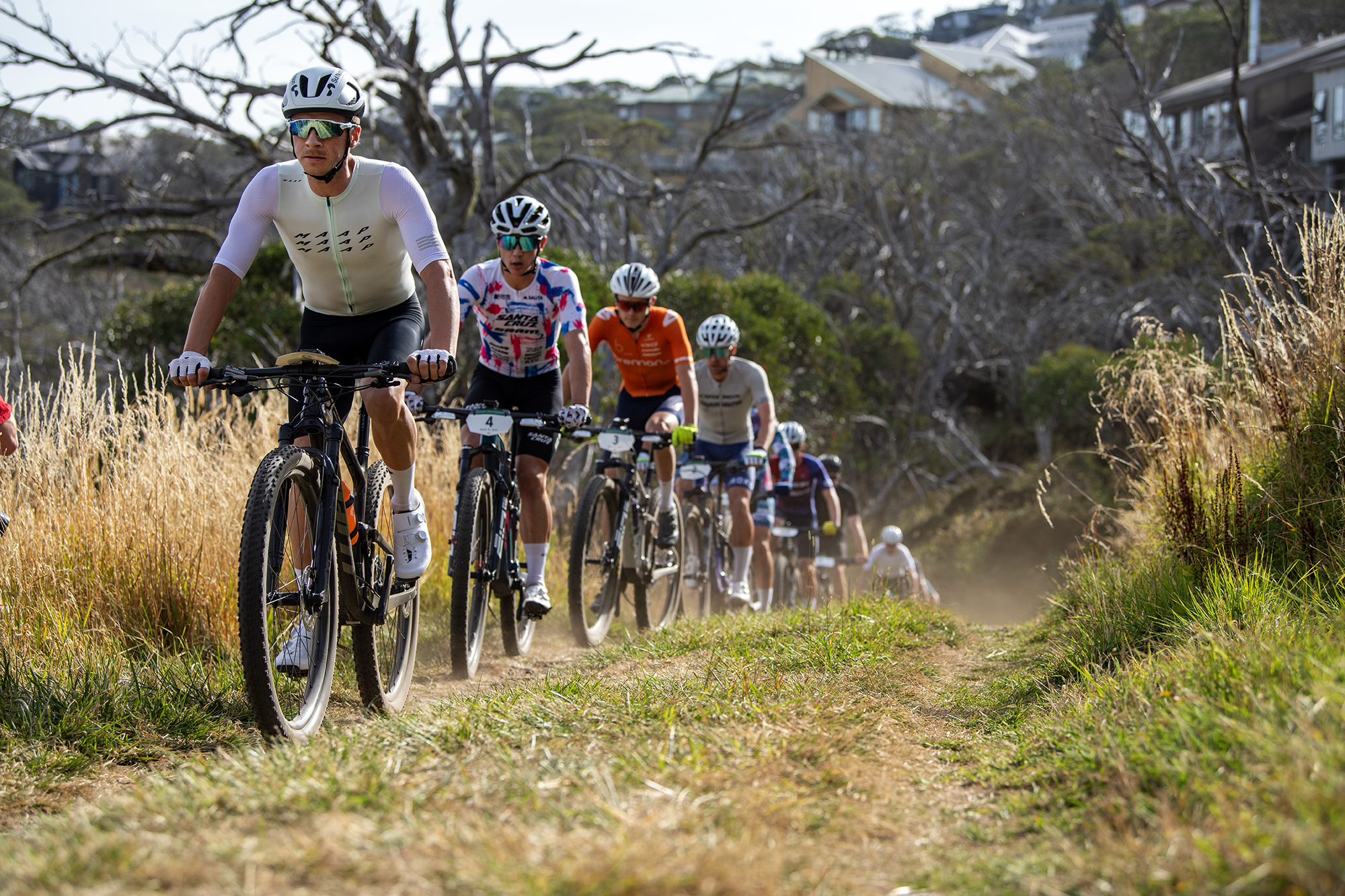Trek Rail+ 9.8 GX Review: Bosch CX Mullet eMTB
Photos by Gerard Lagana
Trek’s new all mountain mullet e-bike delivers a perfectly balanced all-day ride.
The Trek Rail is Trek’s workhorse e-bike. The fourth generation of the Rail featured a 29” platform with the full-powered Bosch CX motor and 160/150mm travel. While it performed well across a range of applications, it wasn’t a standout performer in any one. This all changed with the launch of the new fifth-generation Trek Rail+, which has been redesigned to let you ride longer, on more technical trails, and more comfortably.
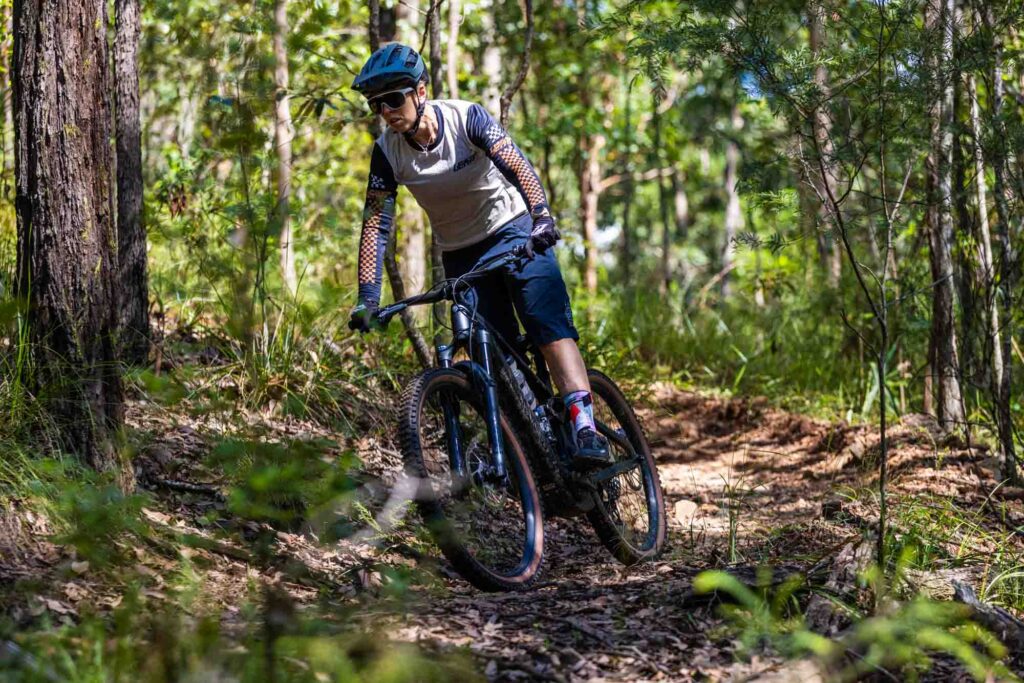
The New Trek Rail+
The Rail+ is equipped with the Bosch CX Generation 5 motor, paired with an 800Wh battery, a mullet setup across all sizes (excluding Small, which is a full 27.5” bike), 160mm travel front and rear, and an updated RIB 2.0 battery latch system. The two models available at this stage – the 9.8 (tested) and the 8 – represent Trek’s OCLV carbon and alloy frame options respectively. This new 160mm mullet platform gives the Trek Rail+ a fresh, aggressive silhouette that’s ready to rip into the trails.
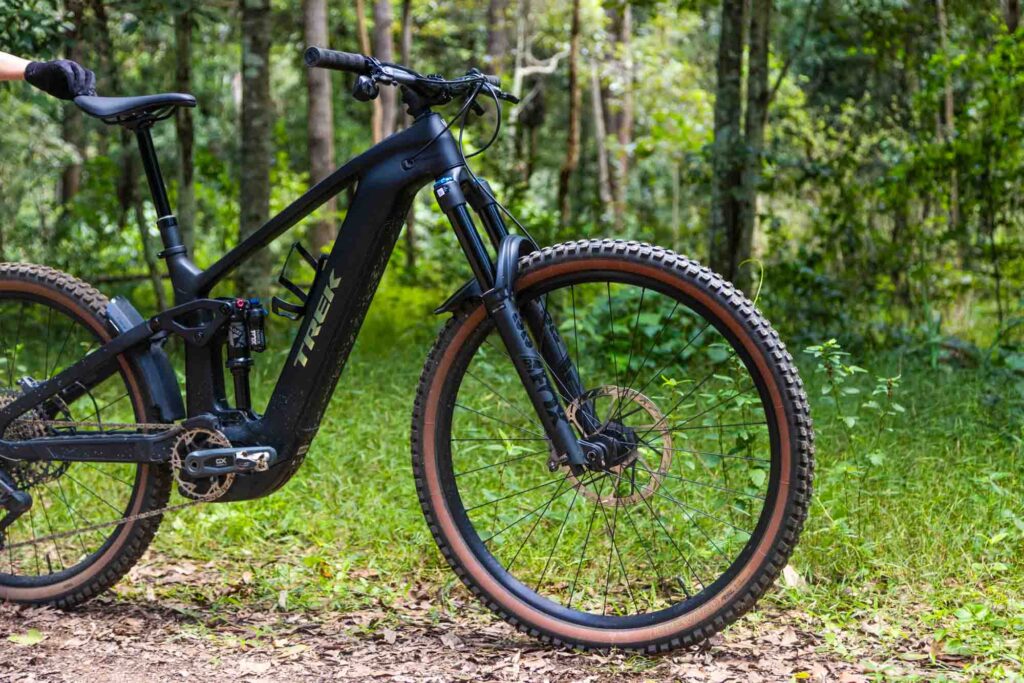
The increased battery capacity of the 800Wh Bosch PowerTube, along with compatibility with the Bosch PowerMore 250 range extender, means the Trek Rail+ is primed for all-day backcountry adventures. In our experience, mullet (or MX) setups thrive in steep and deep terrain and off-piste adventures, so we expect the Rail+ to shine on those lesser-known, highly technical trails often spoken of in whispers rather than shouts.
With a claimed range of 4–7 hours depending on terrain, the new Rail+ seems like the perfect companion for alpine adventures and big-mountain rides. While the bottle cage fits a small bottle, it also houses the Bosch PowerMore range extender, so riding with a pack is a must for all-day epics. If you’re planning to use the full 1050Wh of battery-delivered energy, you’ll likely need more snacks and water than one bottle can carry.
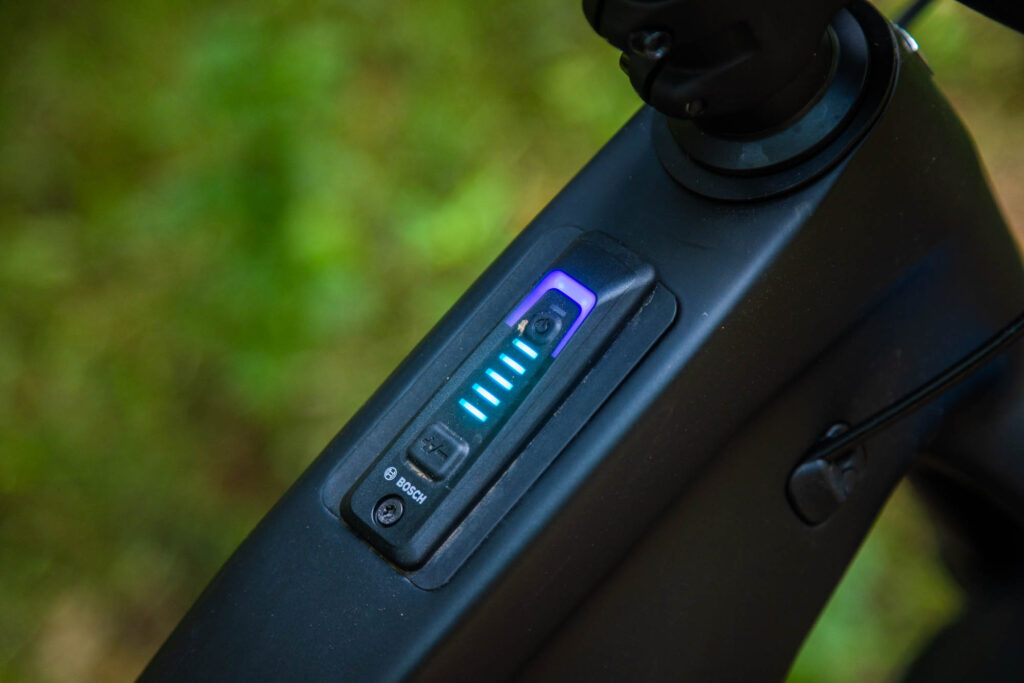
The Trek Rail+ comes with both the Bosch System Controller on the top tube and a bar-mounted Mini Remote, removing the Bosch Kiox head unit found on previous generations. The full feature set of the Kiox is still accessible via the Bosch Flow app.
Geometry Tweaking
The Trek Rail+ offers a diverse range of ride experiences thanks to its adjustable geometry, featuring a Mino Link and angled headset cups (available separately). The Mino Link, located on the top pivot, ships in the low setting. Switching to high steepens the geometry by 0.5° and increases bottom bracket drop by 7mm. For example, the head tube angle shifts from 64.5° in low to 65° in high, a change that noticeably affects handling. Additionally, the angle-adjust headset cups allow for a further 1° adjustment in either direction without affecting bottom bracket height, similar to Trek’s Slash model.

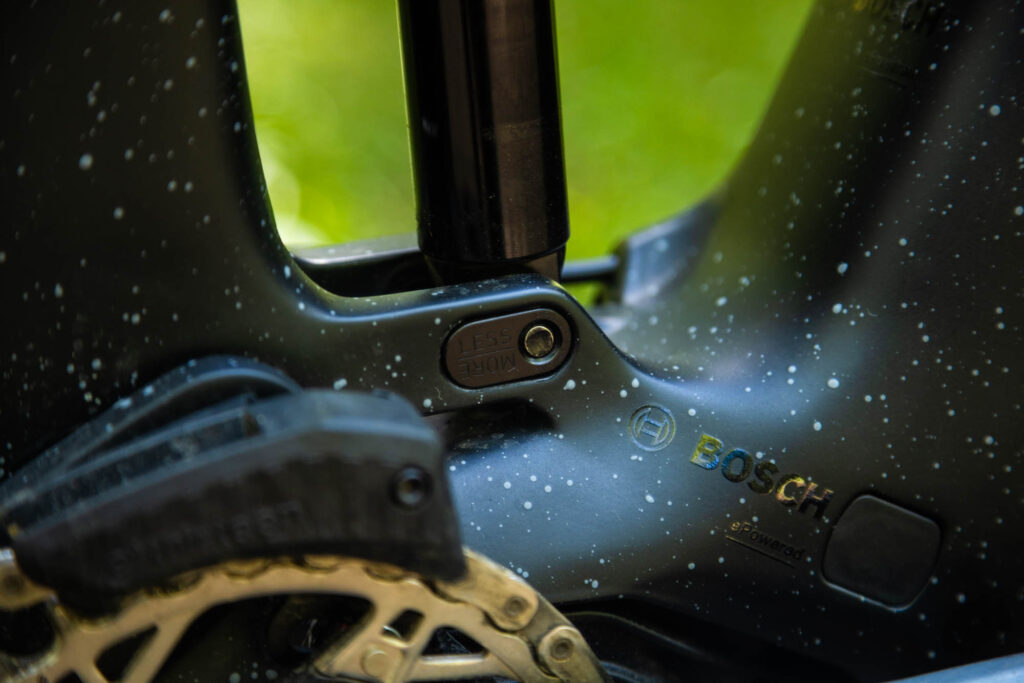
With a 450mm reach on our size Medium, the Trek Rail+ sits comfortably in line with other bikes in this category, especially considering that the “long and low” trend is starting to come full circle.
Initial Impressions: Bike and Setup
Picking the bike up from our local Trek dealer, getting ready to ride was as simple as setting your position, dialing in your suspension, and linking to the Bosch Flow App.
The Trek Rail+ is the first bike I’ve personally tested with the new-generation Bosch CX Performance Line drive unit and SRAM GX Eagle Transmission.
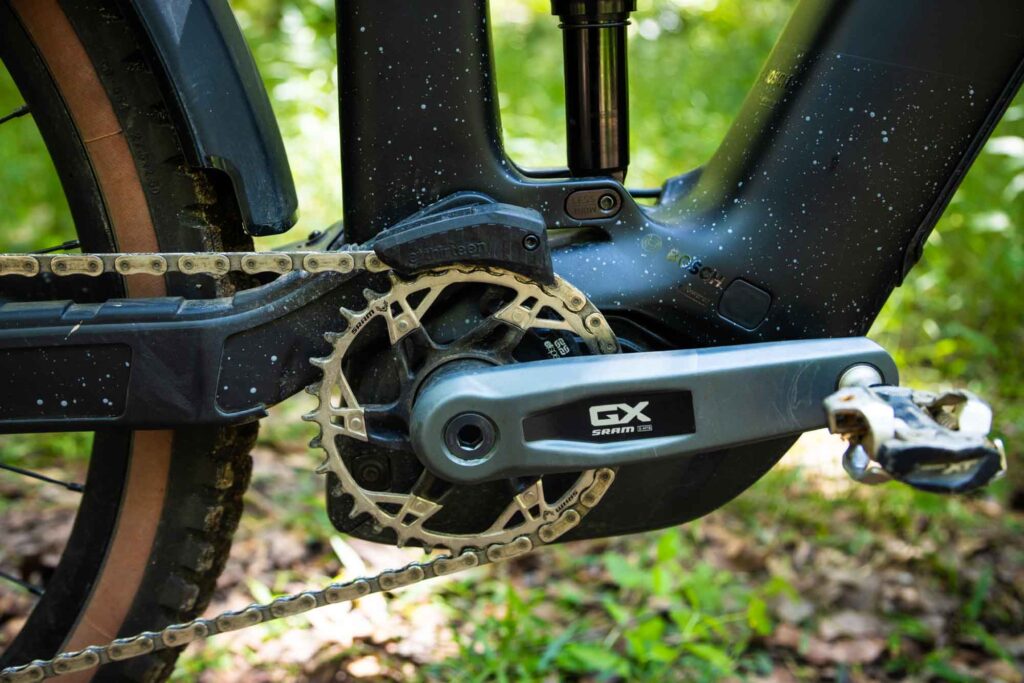
At first glance, the Trek Rail+ 9.8’s stealth black colourway is an understated crowd-pleaser. Matte silver decals and what I’ve dubbed ‘sealant splatter’ graphics on the rear triangle add a creative flair. Our Rail+ was shod with Bontrager Brevard RSL SE tyres, and SRAM Code Bronze brakes provided the stopping power.
Frame-wise, the downtube is all brawn, housing the 800Wh battery. A key upgrade here is the RIB 2.0 battery latch system, which is accessed with an 8mm Allen key and this resolves the rattle issues from previous generations.
A major change to the Trek Rail+ is the platform: moving to a mullet setup with increased rear travel to 160mm. This signals more than just an evolution – it’s a full-blown reimagining of the model. My main criticism of the previous Rail+ was that it felt more like a plower than a player, so I was curious to see how this new version would perform on my local mix of steep scree and more moderate bike park flow.
That said, an initial minor complaint: the dropper lever. Why do we continue to see poorly specced dropper posts and levers on bikes of this calibre? The bike may be specced with SRAM Eagle GX rather than top-tier drivetrain, but it’s also equipped with a Fox Performance Elite Float 38 fork and Fox Performance Elite Float X shock. Fitting a cable-activated Bontrager Line dropper with a flimsy plastic lever feels below par.
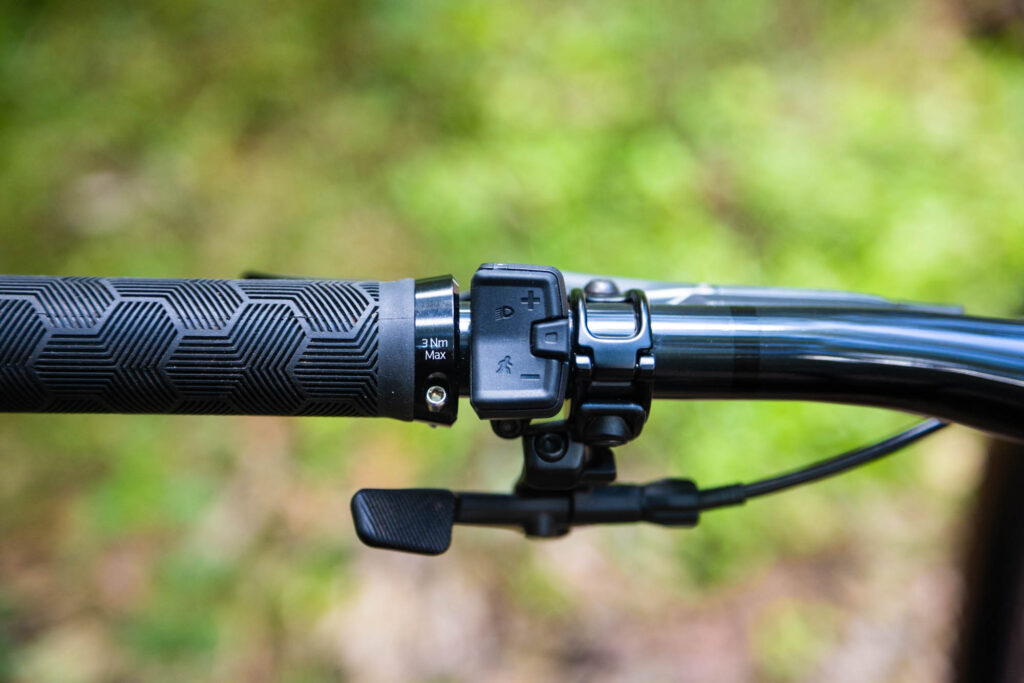

Thankfully, the gripes end there. The rest of the Bontrager components suit the bike well. The Bontrager Verse Short Comp saddle is a crowd-pleaser with its inoffensive short-nose design. The Line Pro stem (45mm) and Line Pro carbon bars (780mm) make for a comfortable, upright cockpit.
The Bontrager Line Comp 30 wheelset might be a future upgrade point for some. A robust, tubeless-ready alloy wheelset, they weigh over 2kg. But hey—that’s why you’ve got a Bosch Performance Line CX motor, right?
Trek Rail+ on the Trail
From my first rides on the Trek Rail+, I was impressed with how agile a full-weight, full-powered e-bike could feel. This is partly due to the bike’s balanced and playful geometry, and partly due to the sensitive, natural power delivery from the Bosch Performance Line CX system. Unlike many e-bikes I’ve tested, the Rail+ feels flickable—it encourages you to hop, whip, and jump your way down the trail instead of simply smashing through with brute force.
That said, there’s plenty of brawn available. The CX’s 85Nm torque is quick to engage and responsive to minimal rider input, without feeling overly surgy. Bosch has nailed the natural ride feel – even in their full-powered systems – and that’s a big deal.
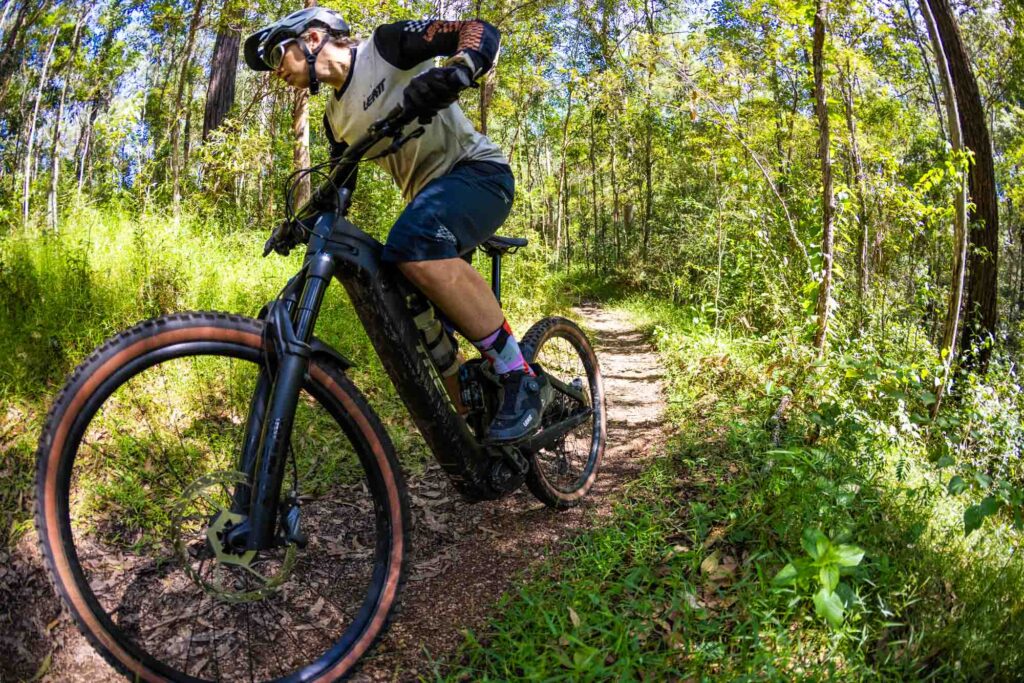
I rode the Rail+ alongside another e-bike with Shimano’s EP-801 and swapped between the two mid-ride. The difference in motor audibility was noticeable. Bosch has made strides in reducing noise at low support levels, but it’s still more audible than Shimano’s motor when just cruising. Is this a dealbreaker? Probably not. The Bosch’s output isn’t loud – just a soft, consistent whir.
Interestingly, when power ramps up, Shimano gets louder, while the Bosch CX remains relatively quiet. Bonus points: I didn’t experience any of the unsettling clunk that plagued earlier generations of the Bosch motor.
In terms of raw power, the CX isn’t the most muscular drive unit. Its 600W peak and 85Nm torque fall short compared to the DJI Avinox M1 (850W, 105Nm) or the latest Specialized Levo (720W, 111Nm). But Bosch remains a standout for ride feel. If you’re racing e-bikes, maybe go for a higher-output motor – but for most riders, the feel of the Bosch CX is unbeatable.
The Bosch system feels intuitive. While more powerful motors exist, many deliver torque too abruptly. The CX manages to feel like an extension of your legs. It’s especially noticeable when approaching the 25km/h cutoff – the CX doesn’t suddenly drop off like others. Instead, power fades out smoothly and naturally.
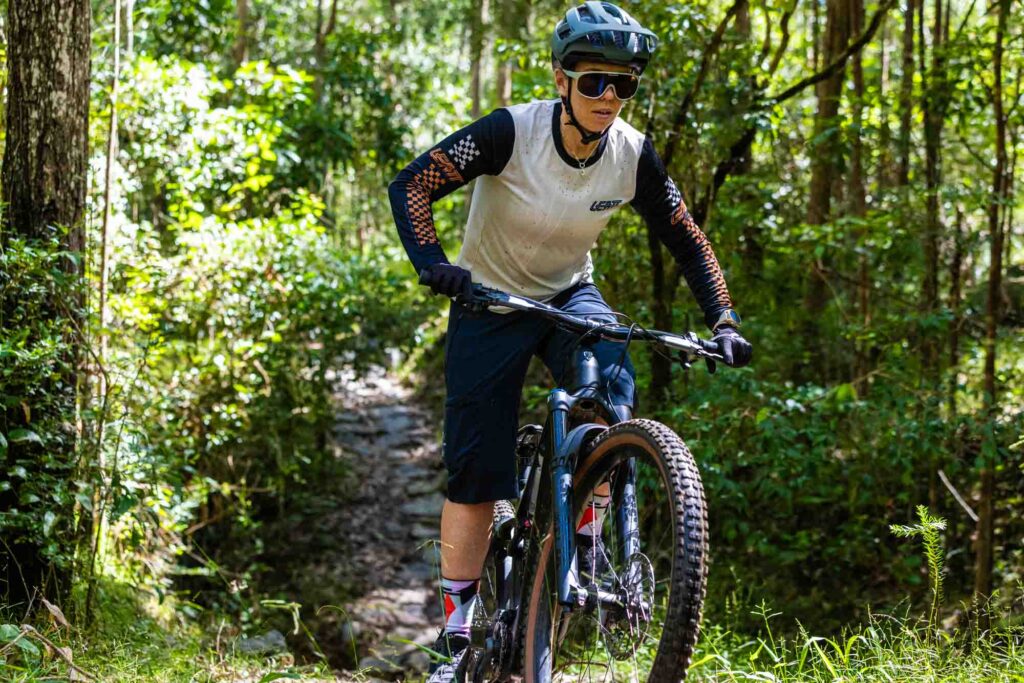
Of course, the motor isn’t everything. The SRAM Eagle GX drivetrain ran flawlessly. I did find the Code Bronze brakes lacking bite during early testing, and overall found them perhaps underspecced on a full-powered, ~25kg e-bike. I think that given the heft and capacity of the new Rail+, it’s worthy of a set of Mavens for superior stopping power.
And yes – that dropper post lever (not the Bontrager Line dropper itself, which performed reliably) continued to underwhelm with sluggish, inconsistent action.
The cockpit was comfortable from the outset, though the bars have a slightly unusual rise and sweep that may limit angle adjustment options. In a neutral setup, I had no complaints.
Throughout testing, I rode the Trek Rail+ on everything from rutted double track to muddy moto trails to flowy bike park lines. The difference between this and the previous generation is stark. The hefty Trek Rail+ handles like a lightweight trail bike, yet feels like it has bottomless suspension. It’s one of the most playful 160mm bikes I’ve ridden – despite its hefty weight.
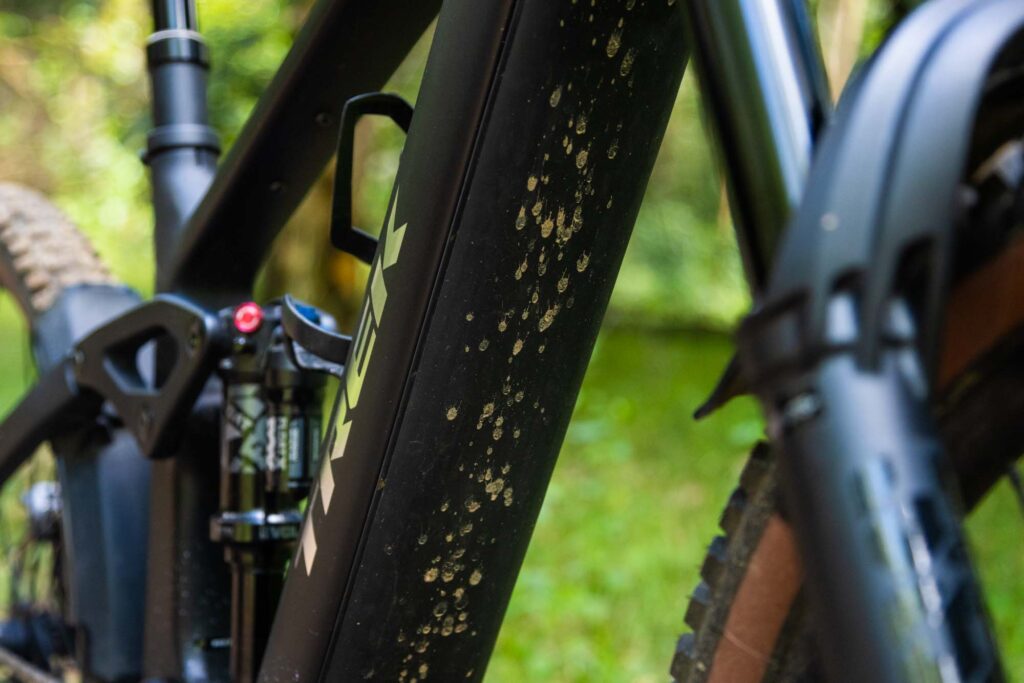
It devours steep descents with ease, but still responds with minimal input in tight corners; a small weight shift is all you need to redirect your line. In the air, the weight takes some getting used to, but it exceeded my expectations on the local jump line and performed far better than its predecessor.
Battery life with the 800Wh pack was phenomenal. I managed nearly 70km and 2000m of climbing on a single charge – mostly in eMTB mode, with some Turbo on steep pinches.
One thing to note: the Bosch System Controller changes color as the battery depletes and disappears entirely when critically low. When you hit two bars (about 40%), it turns red – an effective (and slightly terrifying) reminder to get home. The Flow app and third-party devices like Garmin or Wahoo can give a more precise battery life indication while on the move.
Final Thoughts
The new Trek Rail+ is a fantastic addition to the Trek lineup. I was genuinely surprised by how much the switch to a mullet platform changed the essence of the bike. At $11,999, the Trek Rail+ 9.8 isn’t cheap—but it’s not outlandishly priced compared to other carbon offerings.
I’ll admit, I was a mullet skeptic—do we really need another wheel combo? But for a full-powered, all-mountain e-bike, I now believe a mullet setup offers the best of both worlds: the lively, playful feel of a trail bike, with the capability of something much bigger. What more could you want?
Trek Rail+ 9.8 GX Key Specifications:
- Brand: Trek
- Model: Rail+ 9.8 GX
- RRP: $11,999 AUD
- Weight: 24.9kg (Medium)
- Buy from: www.trekbikes.com/au
Geometry & frame:
- Available Sizes: S, M (tested), L, XL
- Frame Material: OCLV Carbon
Suspension:
- Fork: Fox Performance Elite Float 38, GRIP X damper
- Shock: Fox Performance Elite Float X
Drivetrain:
- Shifters: SRAM AXS Pod
- Derailleur: SRAM GX Eagle AXS
- Crankset: SRAM GX, 160mm
- Cassette: SRAM Eagle 10–52T
- Chain: SRAM GX Eagle
Motor & battery:
- Motor: Bosch Performance Line CX Gen 5
- Battery: Bosch PowerTube 800Wh
Wheels & tyres:
- Hubs: Rapid Drive 108
- Rims: Bontrager Line Comp 30 (Aluminium)
- Spokes: Stainless Steel
- Tyres: Bontrager Brevard RSL SE, 29” front / 27.5” rear x 2.5”, tubeless-ready
Brakes:
- Brakes: SRAM Code Bronze
- Rotors: SRAM 6-bolt, 200mm front / 220mm rear
Cockpit & Contact Points:
- Stem: Bontrager Line Pro 35, 45mm
- Handlebars: Bontrager Line Pro, OCLV Carbon, 780mm
- Seatpost: Bontrager Line Dropper, 34.9mm, 170mm (Medium)
- Saddle: Bontrager Verse Comp Short
